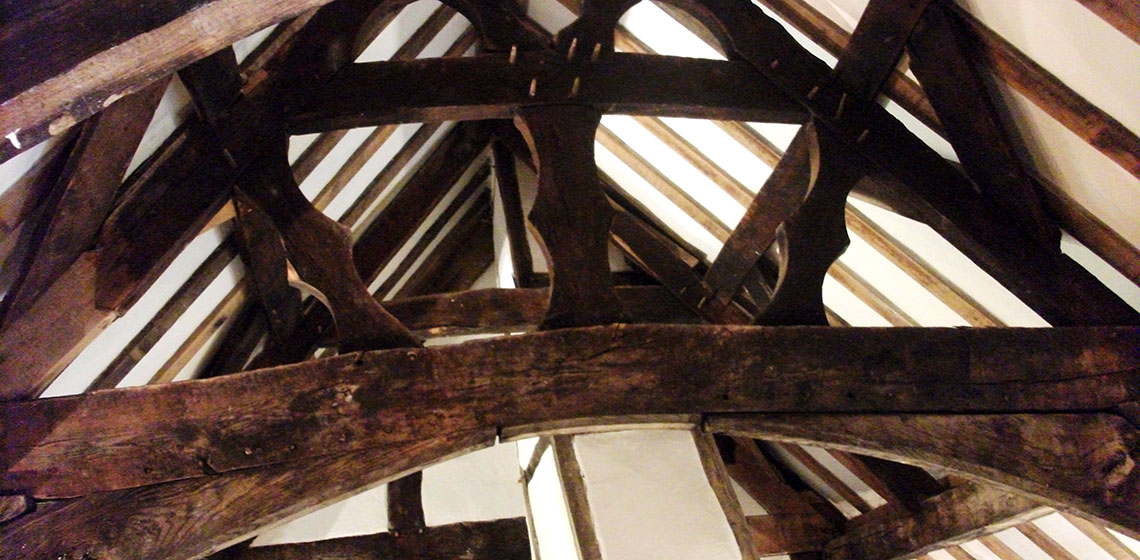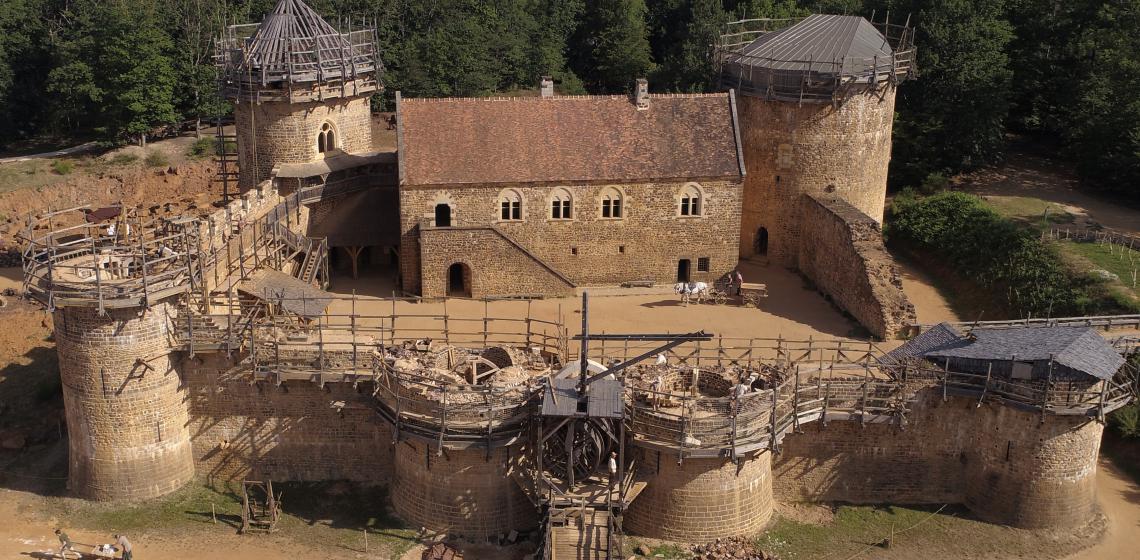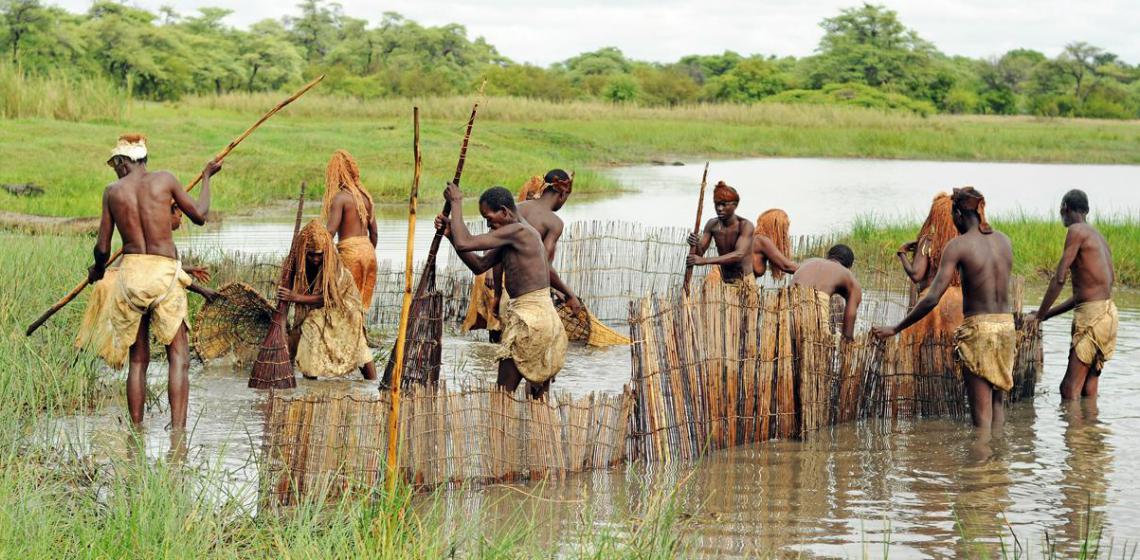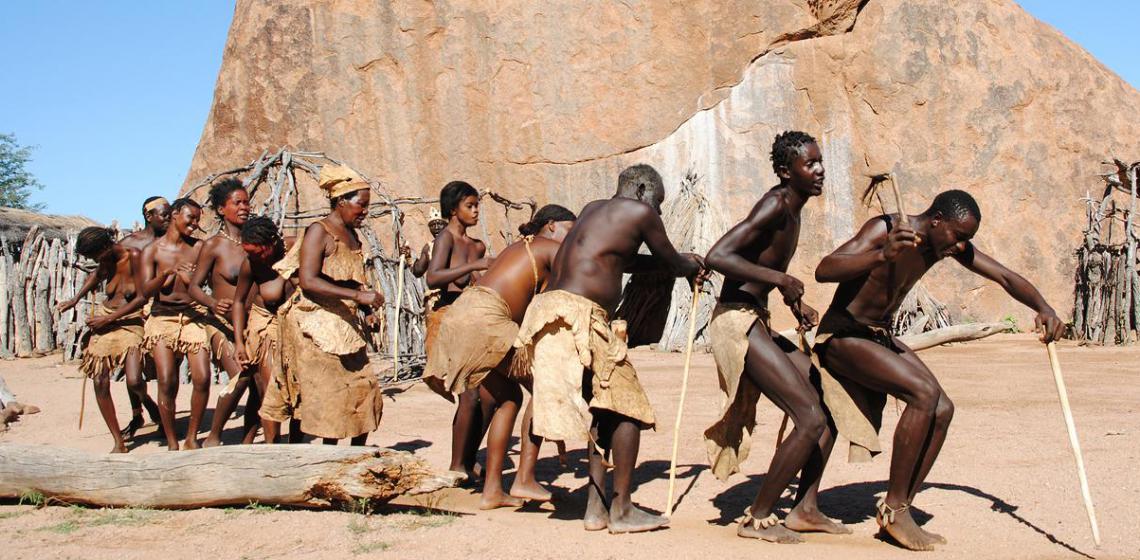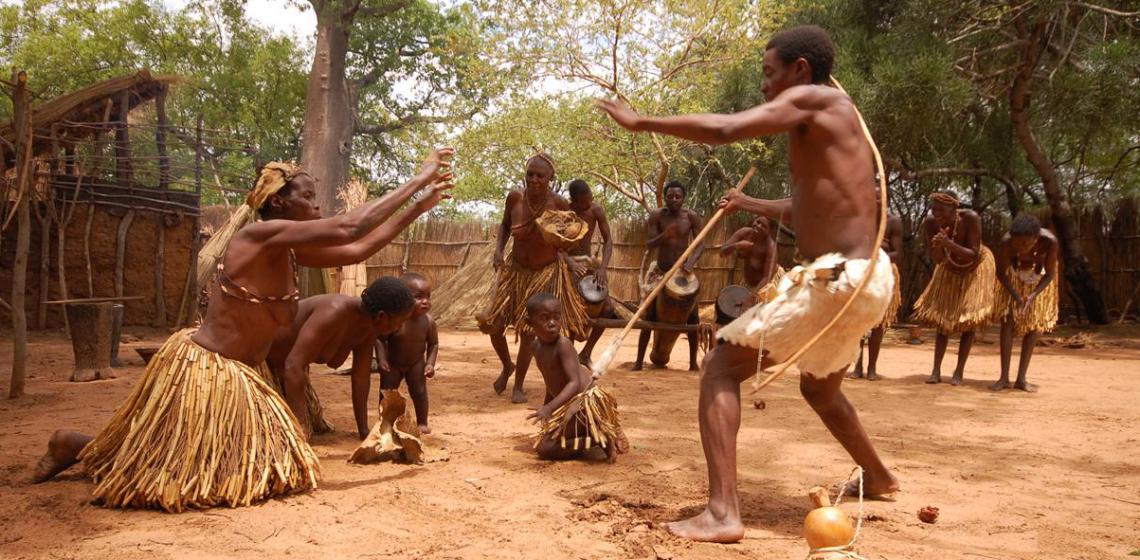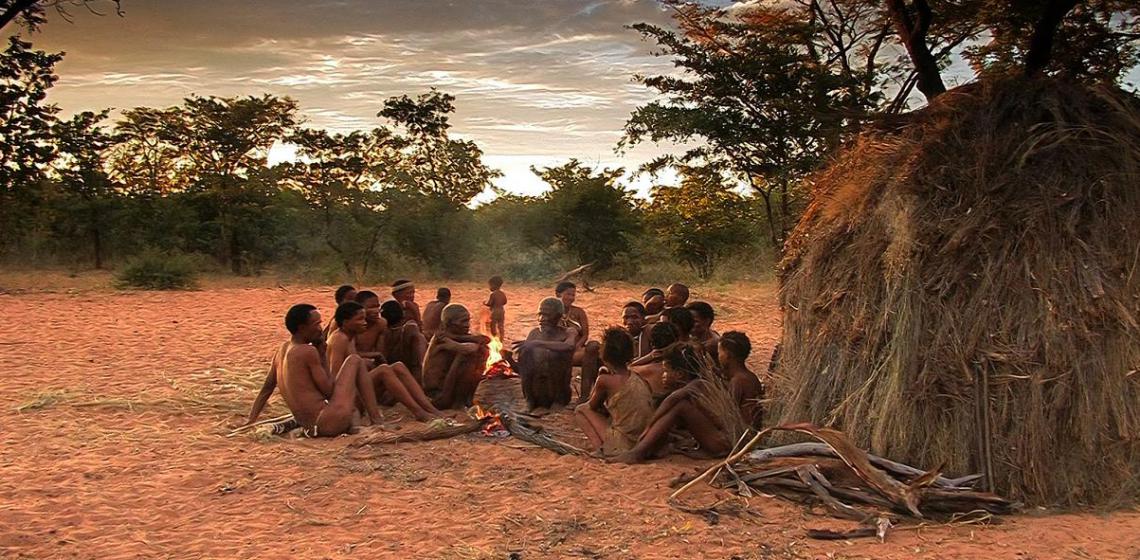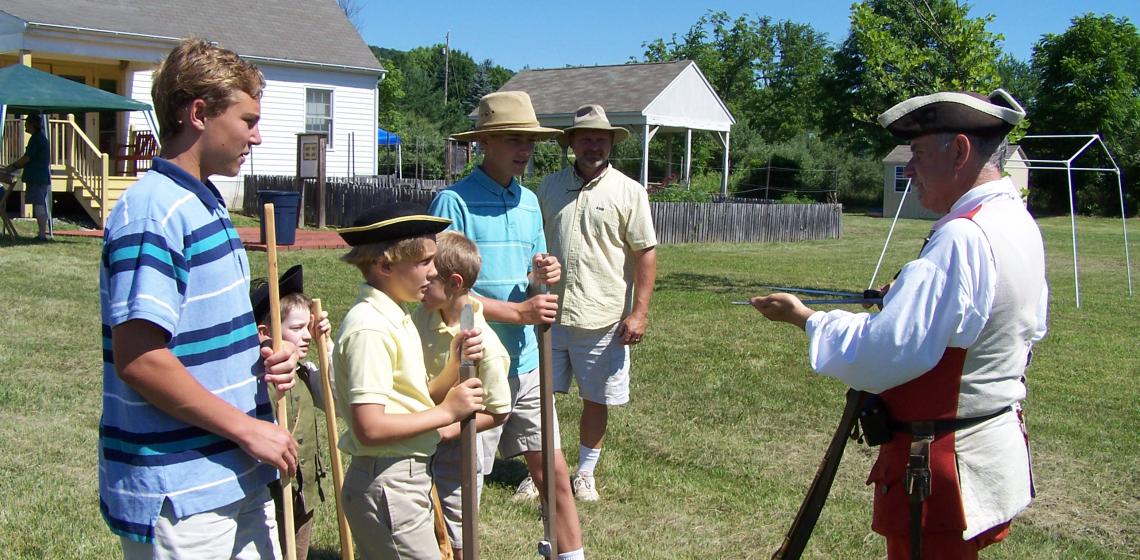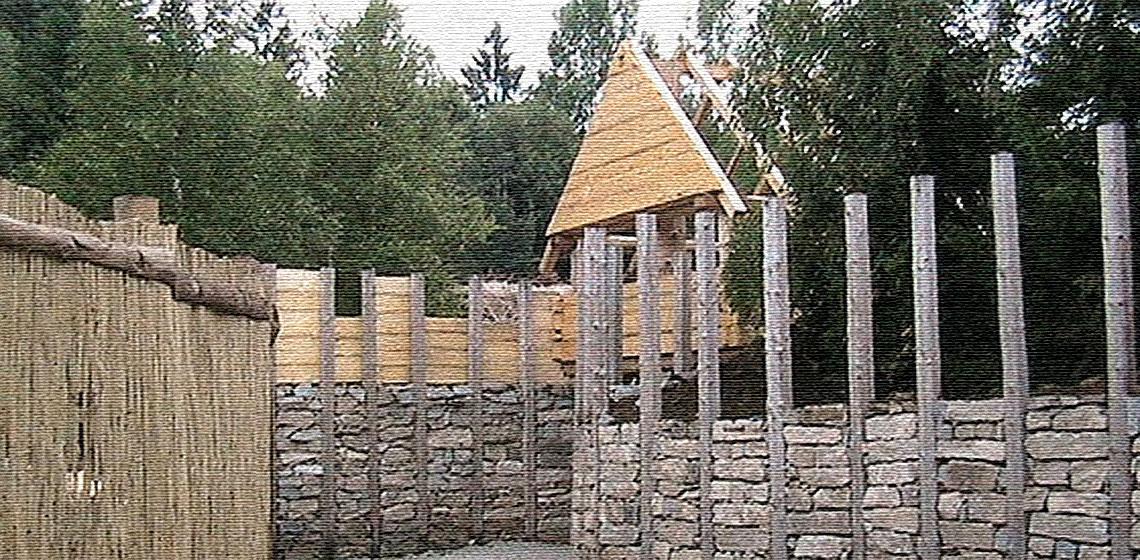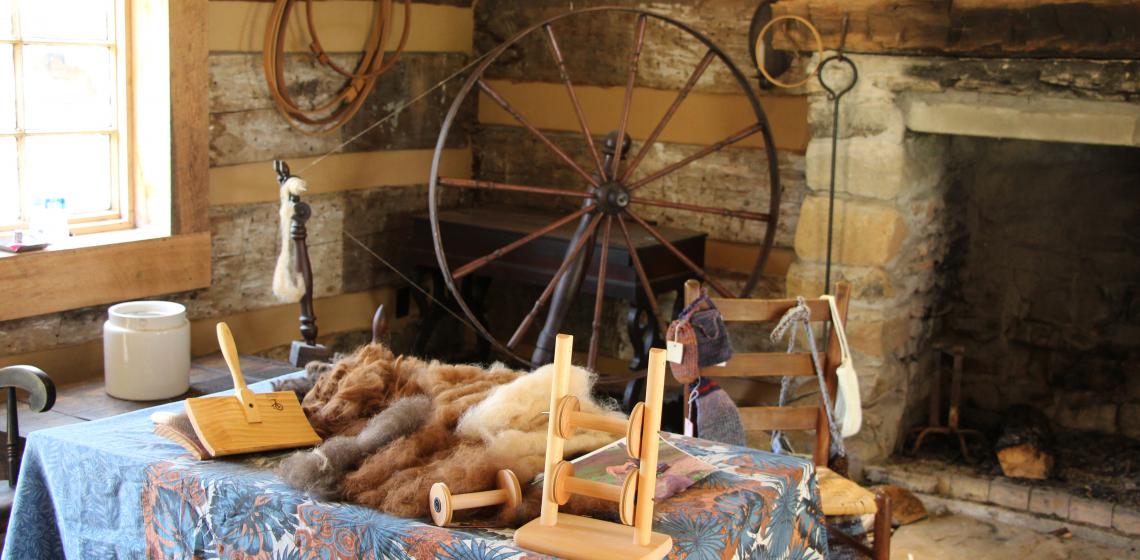Archaeological Open-Air Museum
Guédelon (FR)
In Guédelon forest, in a once disused quarry, using medieval technology, woodcutters, quarrymen, carpenters, stonemasons, blacksmiths, tilers, carters and rope makers are building a 13th-century castle from scratch...
In Guédelon forest, in a once disused quarry, woodcutters, quarrymen, carpenters, stonemasons, blacksmiths, tilers, carters and rope makers are building a 13th-century castle from scratch...
Living Museum of the Mbunza (NA)
As with all Living Museums in Namibia the main focus of the Mbunza Living Museum is to provide visitors to the museum with a detailed and authentic insight into the traditional, pre-colonial culture.
The Living Museum, situated at the Samsitu Lake, is a traditional village of the Kavango, who have lived in this area for centuries. The village has been built entirely from natural material and the actors of the Museum carry clothes made from self- tanned, with Mangetti nut oil refined leather. The outfit actually had to be reconstructed from old photographs.
Living Hunter’s Museum of the Ju/’Hoansi, Xa Oba (NA)
Apart from getting to know the fascinating ancient culture of the Ju/’Hoansi, native to the Kalahari desert for thousands of years, experiencing a real hunt with hunters from the Living Museum is the focal point.
Here the traditional bow hunt with poisoned arrows, the digging out of spring hares and porcupines, the snare catching of guinea fowls, khoraans and other birds for the daily hunt for food has never been terminated. The San living in this area are actually the only ones of their cultural group that are officially allowed to still hunt traditionally. Thus they still master the art of reading tracks and are delighted if visitors show special interest herein. The opportunity for visitors to be able to take part in such a hunt is also unique.
Living Museum of the Damara (NA)
Together with the Bushmen the Damara belong to the oldest nations in Namibia. Their original culture was a mixture of an archaic hunter-gatherer culture and herders of cattle, goats and sheep. Due to their loose social structures the Damara were not able to defend themselves against aggressors during the colonization of Namibia. This is one of the reasons why their culture has to a great extent fallen into oblivion.
Within the framework of the Living Museum of the Damara an attempt was made to reconstruct the “lost culture” of the Damara. Here the visitors have the unique opportunity to get to know the fascinating traditional culture of the Damara, thus contributing to the preservation of the culture as well as to a regular income for the Damara community that built the museum.
The museum is member of the Museums Association of Namibia; the LCFN is member of EXARC.
Living Museum of the Mafwe (NA)
The Living Museum offers visitors an interesting insight into the life of the Mafwe. The Living Museum is an authentic open-air museum where guests can learn a lot about the traditional culture and the original way of living of the Mafwe.
They demonstrate and describe everything with great dedication and the guide translates into english. Almost every offered program is interactive, because it is also great fun for them when the visitors try to weave a traditional net or taste some of the offered meals.
The museum is member of the Museums Association of Namibia; the LCFN is member of EXARC.
Living Museum of the Ju/‘Hoansi - Grashoek (NA)
The Living Museum of the Ju/'Hoansi-San gives visitors an interesting insight into the life of the San. The Living Museum is an authentic open-air museum where guests can learn a lot about the traditional culture and the original way of living of the San.
The Ju/'Hoansi demonstrate and describe everything with great dedication and the guide translates into english. Almost every offered program is interactive, because it is also great fun for the Ju/'Hoansi when the visitors try to shoot an arrow, experience the special Ju/'Hoansi rope skipping or try to sing an original song.
The museum is member of the Museums Association of Namibia; the LCFN is member of EXARC.
Fort Edwards (US)
Fort Edwards is one of the earliest home sites of Hampshire County (West Virginia's oldest county) and as one of the few known Virginia frontier fort sites of the French and Indian War, it is a reminder of the valiant men and women of this nation who struggled to forge a community out of the wilderness.
Fort Edwards is one of the earliest home sites of Hampshire County (West Virginia's oldest county) and as one of the few known Virginia frontier fort sites of the French and Indian War, it is a reminder of the valiant men and women of this nation who struggled to forge a community out of the wilderness.
Archeopark Prásily (CZ)
The Keltoi association is a civil society aiming at developing social activities and education for children and youngsters. For this purpose, they have constructed a Celtic settlement (5th – 1st century BC) near Prášily (Šumava) where they organise short and long stays and focus partly on the technique of the Iron Age, partly on social aspects of their (and our) life.
The Keltoi association is a civil society aiming at developing social activities and education for children and youngsters. For this purpose, they have constructed a Celtic settlement (5th – 1st century BC) near Prášily (Šumava) where they organise short and long stays and focus partly on the technique of the Iron Age...
Fort New Salem (US)
Fort New Salem is a living history outdoor museum interpreting the history, crafts and lifestyles of West Virginia.
Fort New Salem is a living history outdoor museum interpreting the history, crafts and lifestyles of West Virginia.

